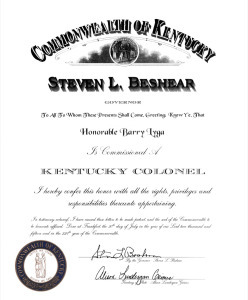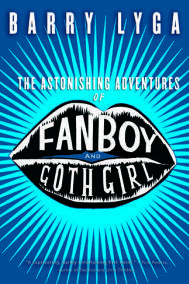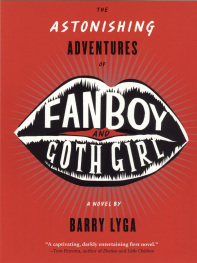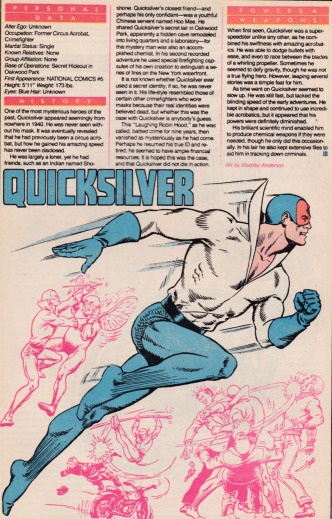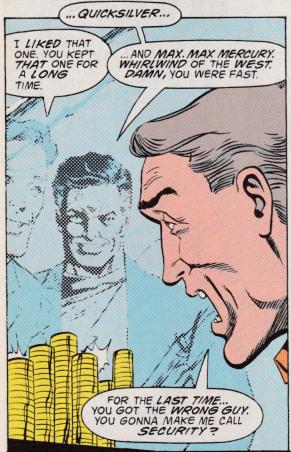Barry Lyga's Blog: The BLog, page 27
September 28, 2015
How It Happened: Boy Toy
One of the questions I am asked most often is, “Where did you get the idea for this book?” Or, sometimes, “What was your inspiration?” I mean, I get this all the time.
So I figured I would start up a series here called “How It Happened,” stepping through my career book-by-book — in publication order — to answer precisely that question!
Until the publication of I Hunt Killers, the question I got most often was, “What inspired you to write Boy Toy?” (Now the question I get most often is, “What’s the best way to kill someone?”)
Well, here’s the story…
In the county where I grew up, in 2001, a substitute teacher was arrested for having sex with multiple male students. As the story played out, we learned that she was basically conducting orgies at her house with 15- and 16-year-old kids.
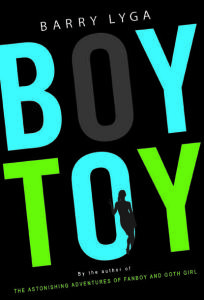 There were photos of her with the newspaper stories, of course, and she was pretty cute. I became sort of unhealthily obsessed with the story — it was nearly identical to so many others, including Mary Kay Letorneau’s. What the hell was going on with these women? What were they thinking? I started to see patterns emerging in the “hot for teacher” cases — young, attractive, usually married women, just beginning their careers…and then throwing them away for the thrill of illicit sex.
There were photos of her with the newspaper stories, of course, and she was pretty cute. I became sort of unhealthily obsessed with the story — it was nearly identical to so many others, including Mary Kay Letorneau’s. What the hell was going on with these women? What were they thinking? I started to see patterns emerging in the “hot for teacher” cases — young, attractive, usually married women, just beginning their careers…and then throwing them away for the thrill of illicit sex.
A friend of mine who worked in the county school system joked that the case was really tough, that the county had to provide grief counseling for the boys who weren’t involved. Ha-ha, right? Poor guys, didn’t get to fuck the hot teacher.
That made me start to think about a cultural hypocrisy that is well and truly ingrained in us. Namely, that if the roles had been reversed — if a male teacher had been hosting orgies at home with teen girls — we would have strung the guy up by his balls without so much as a preliminary hearing.
But when it was a young, attractive woman and boys… Well, break out the champagne.
To this day, when I mention the subject of my second book, people chortle and say, “Good for him!” Or “Lucky kid!”
And I was wondering: Why?
It occurred to me that we never hear from the boys in these cases. They’re minors, so they’re protected and we never know their names or how they feel about what’s happened.
Because it’s become a cultural axiom that any boy who has sex with an older woman is “lucky.”
But rape is rape, and I had a feeling that maybe those kids weren’t so lucky after all. And maybe I could tell that story.
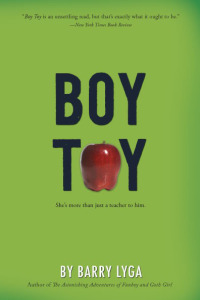 A couple of months before I sold my first novel, I was in New York, having lunch with my agent. I knew that she would be submitting The Astonishing Adventures of Fanboy & Goth Girl soon and I wasn’t sure what I should do in the meantime. Should I just start on my next novel?
A couple of months before I sold my first novel, I was in New York, having lunch with my agent. I knew that she would be submitting The Astonishing Adventures of Fanboy & Goth Girl soon and I wasn’t sure what I should do in the meantime. Should I just start on my next novel?
Absolutely, she said.
The problem was, I didn’t know what my next novel should be. After all, I hadn’t sold anything yet. Yes, I’d written a YA novel and I had an agent trying to sell it, but… What if it didn’t sell? Should I really write another YA novel, in that case? Or should I try something else?
Ultimately, after talking with my agent about it, I decided to give Boy Toy a shot. I did a little research, started reading about baseball, and I was working on the early chapters when I got the call that Houghton Mifflin wanted Fanboy & Goth Girl…and my next book!
Good thing I was already working on it, eh?
September 25, 2015
Kentucky Fried Lyga
Last week, I was honored to attend the Kentucky Library Association/Kentucky Association of School Librarians annual conference in Louisville, where I was presented with the Kentucky Bluegrass Award for I Hunt Killers. The award was great, the ceremony was great, the librarians were great, but even before all of that, I spent a few days in Northern Kentucky (so far north, the natives call it “Southern Ohio”), where I visited a bookstore, two schools, and a library.
 First up was Blue Marble Books, pretty much as soon as I got off the plane! A quick stop at the hotel and then I was at Blue Marble, where I talked about I Hunt Killers and After the Red Rain and answered questions and signed books and admired some appropriately bloody cookies.
First up was Blue Marble Books, pretty much as soon as I got off the plane! A quick stop at the hotel and then I was at Blue Marble, where I talked about I Hunt Killers and After the Red Rain and answered questions and signed books and admired some appropriately bloody cookies.
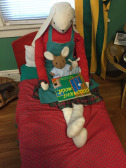 Blue Marble has a very cool room modeled after the classic Goodnight, Moon. Apparently every single item in the room comes from the book. That’s attention to detail!
Blue Marble has a very cool room modeled after the classic Goodnight, Moon. Apparently every single item in the room comes from the book. That’s attention to detail!
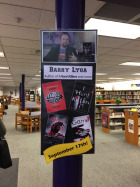 The next day, I spent the day at Campbell County High School. I spoke to the entire senior class, then the entire junior class, then spent some time with a small group of about a dozen kids who were aspiring writers. In every case, I had a blast. The big groups were incredibly enthusiastic, and the kids in the small, focused group had some terrific questions. It was a lot of fun.
The next day, I spent the day at Campbell County High School. I spoke to the entire senior class, then the entire junior class, then spent some time with a small group of about a dozen kids who were aspiring writers. In every case, I had a blast. The big groups were incredibly enthusiastic, and the kids in the small, focused group had some terrific questions. It was a lot of fun.
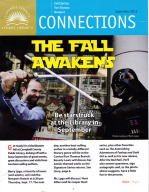 That night, I spoke at the Newport branch of the Campbell County Public Library, where a twelve-year-old girl asked the most incredible, mechanical question about paragraph transition. I almost never get technical questions at these things — people always want to know big picture stuff. I was amazed and impressed that this kid was so deep into writing already, and I blurted out, “You’re kick-ass!” Her father was sitting right next to her. Fortunately, he laughed.
That night, I spoke at the Newport branch of the Campbell County Public Library, where a twelve-year-old girl asked the most incredible, mechanical question about paragraph transition. I almost never get technical questions at these things — people always want to know big picture stuff. I was amazed and impressed that this kid was so deep into writing already, and I blurted out, “You’re kick-ass!” Her father was sitting right next to her. Fortunately, he laughed.
The next day, I awoke at the ungodly hour of 5:45am (seriously, even the sun was asleep) to make the trip to Boone County High School. Again, I spoke to two large groups (this time mixes of all four grade levels), then hung out with a smaller group in the library. This group had had to produce pieces of art inspired by I Hunt Killers, so I got to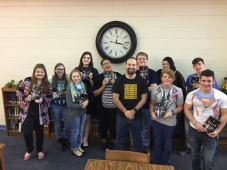 see some cool artwork and listen to some very, very gruesome poetry! They were a great bunch and we had a lot of fun.
see some cool artwork and listen to some very, very gruesome poetry! They were a great bunch and we had a lot of fun.
That afternoon, I traveled to Louisville, where I had dinner with a group of librarians. The following day, I attended the KASL award luncheon, where I was formally given the Kentucky Bluegrass Award. I gave a talk on why I write what I write and why I take the risks I take, a talk made more amusing than it deserved to be when we discovered the projector was showing my presentation upside down!
As the luncheon wended towards its end, I was called to the podium again, much to my surprise. This time, I was presented with a certificate from the Governor of Kentucky, naming me a Kentucky Colonel.1 Now I’m in the same club as George Clooney, Muhammed Ali, Betty White, and Elvis Presley. How cool is that?
Needless to say, I was quite surprised — I didn’t expect two honors in the same day!
It was humbling to receive both awards, but I have to admit I have a special place in my heart for the commission from the Governor, mainly because now I insist all my friends call me “Colonel.”
Thanks, Kentucky!
Yes, just like Colonel Sanders. Read the link.
September 23, 2015
How It Happened: The Astonishing Adventures of Fanboy & Goth Girl
One of the questions I am asked most often is, “Where did you get the idea for this book?” Or, sometimes, “What was your inspiration?” I mean, I get this all the time.
So I figured I would start up a series here called “How It Happened,” stepping through my career book-by-book — in publication order — to answer precisely that question!
I had written a bunch of stuff. None of it what you might call “successful.”
The year was 2004. I’d published a very small handful of short stories, and some comic books that were — how shall we put it? — not well received. I had also written two novels, neither of which were inducing editors or agents to fall all over themselves while running in my direction. Still, those two novels were getting a better class of rejection from the usual suspects.
One editor read the most recent of those novels and said (paraphrasing), “You’re close. Not this one. Show me your next one.”
I didn’t know what my “next one” would be, though. I was burned out and more than a little depressed, in my thirties and seemingly no closer to success than when I’d sent off my first short story at the age of twelve.
At the time, I was in a local writers group. We got together once a month and critiqued each other’s stuff. In the group were three published authors, so I benefitted from their experience and wisdom.
One thing they asked me about those two novels was this: How old are the characters? I never stated it explicitly.
I figured them all to be in their mid-twenties. Why?
Well, they told me, it’s just that… The characters spoke and acted younger than that. They seemed like teenagers. Had I considered that maybe I had a knack for writing teens? Had I considered writing YA?
Now, realize that this was in 2004, before the YA explosion (right on the cusp of it, really). Consider, too, that I grew up in the 1980s, a time when books for teens were, well, terrible. With the exception of a few folks like Judy Blume, most books aimed at teens when I was a teen were awful, written to moralize, written to be safe. They were crap.
So when told to consider writing YA, my first instinct was to recoil. And, quite truthfully, I was a bit insulted.
By sheer coincidence, though, around the same time, a friend handed me a copy of Mariah Fredericks’ The True Meaning of Cleavage.1 It was a great book, lots of fun, and well written. I remember this thought flitting through my head as I read it: Oh. You’re allowed to write good books for teens now!
Mariah did a lot right with that book, but for me, she did two things that were critically important. First of all, she used a writerly gimmick that I’ve always loved (and had used many times in my own short stories): She started and ended the story with the same sentence. Second of all, her characters liked science fiction.
This made me think of my own misspent youth, my obsession with comic books, and my urgent need to create them. (Check out the Stories I Never Told series on this site to see some of those stories.)
And, truly, the entire story of Fanboy popped into my head at once.
Whereas with those other two novels I had had to force myself to write, with this new one, it just flowed out of me. The problem wasn’t pulling the words out — the problem was keeping up with them! I couldn’t type fast enough. Even as I was writing one chapter, another one a hundred pages away would present itself in my mind, and I was jumping all over the place, just trying to get everything committed to pixels before it left me.
I knew after about three pages of writing that This Was The One. This was the novel that would get me published.
To write the book, I drew on my own childhood — lonely and bullied, desperate to escape a small town that offered precisely zero, enamored of a career and a lifestyle that no one in my circle and no one in their circles could even imagine…so it might as well not exist. It was a time of unapologetic revenge fantasies and pointless lusting after impossible dream girls.
But I realized early on that the book would carry the strange savor of history if I set it during my own childhood in the 1980s. So I updated it to the Turn of the Millennium. My own obsession with Paul Levitz’s Legion of Super-Heroes comics became Fanboy’s obsession with Brian Michael Bendis. My desire for a copy of Adventure Comics #247 and an Apple II computer became Giant-Size X-Men #1 and a new Mac. (Hey, some things stay the same!) And so on.
His urge to create something great and get the hell out of Dodge, though, was precisely the same as mine. No need to change a thing.
And one more thing. An element of wish-fulfillment.
Goth Girl. All at once the friend I wished I’d had and the gadfly I’d so desperately needed at that age.
When I signed on with my agent, the only comment she had on the book was “More Goth Girl, please.” And she was right. In the original draft, after Kyra and Fanboy fight in his bedroom, she disappears from the novel until the very end. Thanks to my agent’s prodding, I came up with the scene at the comic book convention, the one where she famously flashes Bendis. I imagine my thought process was something like this: “You want more Goth Girl? I’ll show you more Goth Girl!”
And then she went out and sold the book…and the rest is history!
P.S. A few years ago, I was fortunate enough to be on a panel with Mariah and got to tell her — at last — that she’d indirectly inspired me to write YA. Luckily, she didn’t groan and bemoan what she’d done. 
Heads out of the gutter, people. Not that kind of cleavage.
September 10, 2015
WiRL: Paula Cole Was Right
What does Paula Cole have to do with Writing in Real Life? Find out in our new episode!
Morgan’s revision saga ends….and a new one begins. It’s OK to cry. Every book is different. What’s it like for spouses to critique each other’s work? Being in denial about your own writing’s flaws. The importance of giving a story time to breathe. Plus: Leia’s up all night for some fun. (We’re up all night to get lucky.)
September 8, 2015
Blood of My Blood Paperback
The paperback edition of Blood of My Blood is coming! On October 6, you’ll be able to snag it for your very own!
In the meantime, here’s a picture of my copy, which came in the mail today.
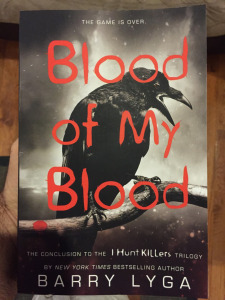 Turns out Billy had one last trick to play on us all — the book is supposed to have a glossy cover, but there was a glitch somewhere along the line and it has a matte cover instead. I think it looks great anyway, and it’ll be fixed for future editions…which means this first printing is something of a collector’s item!
Turns out Billy had one last trick to play on us all — the book is supposed to have a glossy cover, but there was a glitch somewhere along the line and it has a matte cover instead. I think it looks great anyway, and it’ll be fixed for future editions…which means this first printing is something of a collector’s item!
Go get yours on October 6! 
Car Alarms

You’ll just have to imagine the ear-piercing shriek of an alarm. #sorrynotsorry
Can somebody — anybody — please tell me the purpose of car alarms?
I am old enough to remember when car alarms first entered the public consciousness, when they were first announced as a “thing.” They were going to stop crime! Car theft would be a thing of the past! No one would ever lose a car to thieves again!
How’s that working out for you?
Seems to me cars still get stolen, and in addition to not ridding our society of that particular ill, all we’ve done is add a new scourge in the form of car alarms.
Every night — every. single. night. — at least one car alarm (and usually multiples) goes off on my block. Sometimes, the same car will go off several times, usually just as I’m about to fall asleep.
Now, granted, New York has come a long way in terms of safety, but it’s still a city and there’s still crime, but I’m reasonably certain that there are not multiple car-theft attempts on my block alone every goddamned night.
But those alarms go off anyway.
And, here’s the kicker, no one does anything about it.
Follow me here: The gimmick and the promise of a car alarm is that someone dressed in all black, wearing a watch cap and creeping along low to the ground, will attempt to steal your car. The alarm will go off, frightening off the would-be thief. And you, having heard the alarm, will of course rush to the scene to be sure everything is A-OK. And, you know, turn off the alarm.
But does that actually happen? Not on my block!
Those alarms go on forever. No one is checking on the car. If I were a thief, I would have ample time to boost the car, even with the alarm going off.
The alarms just blare and blare and blare. No one is checking. No one is even poking a head out the window to idly check if it’s their ride or not. (Hell, it’s the city — the owner could be in an apartment six block away!)
So the alarm goes off and then eventually shuts itself off, and what was accomplished? Absolutely nothing. No one was even trying to steal the car. Some kid bumped against it or a big truck rattled it enough to set off the alarm, which screams, waking the entire neighborhood…but not the owner.
It’s just pointless.
Car alarms seem like a good idea, and maybe in some areas they are. But even in the country or the suburbs, they go off erroneously — birds knock acorns onto them or those ubiquitous trucks trundle by, shaking their sensors into action.
But in reality, they serve no purpose, other than annoying the hell out of people.
Car alarms should be removed, disabled, shut the hell down. Or, at the very least, shipped deactivated by default from the factory. Or modified so that instead of setting off an ear-splitting screech that wakes up three city blocks, they send a signal to the owner’s phone and wake up that asshole, not me.
Because let me tell you something: The next time a car alarm howls into an otherwise peaceful night, waking me from my slumber for no good reason, I’m going to grab my baseball bat, head outside, and do this:
At least then, there’ll be a reason for the alarm.
September 3, 2015
WiRL: Finally Finished
 Yep, it’s that time of the week again! Time for a new episode of Writing in Real Life!
Yep, it’s that time of the week again! Time for a new episode of Writing in Real Life!
Dreams: when — or if — you should give up on them. The strange definition of “similar” in Hollywood and in publishing. The dream of publishing versus the reality. Is it weird to thank people for thinking your baby is adorable? Barry finally finishes writing a @%^$&* short story. Morgan sees the light at the end of the revision tunnel.
September 2, 2015
Interview: Hats Off Corner
C. Lee McKenzie asked me some questions on her blog, ranging from writing-while-parenting to dealing with rejection. I said things like this:
Inspiration is a nice side effect, when it happens.
And more! Check it out.
September 1, 2015
Stories I Never Told: The Time I Read Mark Waid’s Mind
SPOILER ALERT for “The Return of Barry Allen”
Last time, I said that there were some startling coincidences related to some of the Stories I Never Told. I’ve decided to spend this week focusing on two of them, both of which happen to relate directly to one of my favorite comic book writers, Mark Waid.
A little background, for those of you who don’t know: Waid started in comics in the ’80s as an editor, but didn’t really hit his stride until the ’90s, when he became the main writer on Flash. When he first took on the writing chores, no one really took note — Flash wasn’t a book most people were paying attention to, and Waid was pretty much unknown. In short order, though, he made the book his own and did some truly astounding things with it, sending his reputation into the stratosphere and cementing his bonafides as a truly talented comic book writer.
I’ve always loved the Flash. In the early eighties, Barry Allen (the Flash of my childhood) was forced into a situation where he had to kill his nemesis, the time-traveling Reverse-Flash, in order to save an innocent life. A trial for manslaughter ensued, there was much drama, and in the end, Barry ended up sacrificing himself to save the universe.
So that ended well.
Barry’s protege, Wally West, graduated from Kid Flash to Flash, and that’s pretty much where things stood around about 1992 or so, when I had an idea.
What if…
(Sorry. Wrong company.)
I was trying to break into comics (I was always trying to break into comics!) and one bit of advice I’d read from someone at DC was to try to write a “fill-in” issue for a comic that wasn’t a big deal. In other words, don’t try to reinvent Superman and don’t pitch a massive mega-epic for Batman. But pick a quiet book that’s just plugging along and write a single issue, one that could be dropped into the pond without causing any ripples.
Well, OK.
Flash met the criteria at the time. Waid had just started his run and no one was paying attention to the book. I figured they could maybe use a decent fill-in issue, just in case.
My idea was delightful in its simplicity and, I thought, showed both attention to detail and creativity in one fell swoop.
What if, thought I, Reverse-Flash decided on some posthumous revenge? His death at Barry Allen’s hands was a matter of public record in his own time period, so what if he decided to come back to his past, but Barry’s future…and kill Wally after Barry’s own death? How twisted would that be? Revenge from beyond the grave, at a time when Barry could do nothing about it!
I called the story “Reversal of Fortune,” and the basic premise was that Reverse-Flash comes to the nineties to kill Wally. At the time, Wally could move at something like three or four times the speed of sound, while Reverse-Flash could move at the speed of light. No contest, right? Reverse-Flash would toy with Wally for a while, making damn sure Wally knows why he’s going to die.
And then something would happen. I hadn’t figured out what yet. (I would figure it out if DC bought the story!) Somehow, Wally turns the tables on Reverse-Flash and soon has an unconscious bad guy at his feet.
And he realizes… He realizes that if he kills Reverse-Flash right now, then Reverse-Flash will never be able to return to his own time period. And will, as a result, never be able to go back in time to the 1980s and threaten that innocent life. And if he never threatens that innocent life, then, well, he’ll never be killed by Barry Allen, and maybe — just maybe! — Barry won’t end up in a situation where he has to sacrifice himself to save the universe.
If Wally kills Reverse-Flash, Barry could be alive again!
But, of course, Wally comes to realize that this isn’t his decision to make. Barry would never condone cold-blooded murder like that, no matter the possible benefits, and so the tale ends with a sobered Wally sending the bad guy into the future so that the cycle can complete itself.
Ta-da! Some action, some character work, a dash of continuity porn, and a moral to the story, all in a neat little package.
I sent the proposal off to the Flash editor, Brian Augustyn. Within a couple of weeks, I got it back, with a handwritten note (which I seem to have lost in the past twenty or so years — damn!) which said, mysteriously, “Barry, I’m sending this back to you so you won’t get the wrong idea. Great minds think alike!”
What the hell?
I had no idea what he meant. But a little while later, I read the latest issue of Flash, and who should show up?
Barry Allen.
It clicked for me. It wasn’t really Barry. It was Reverse-Flash pretending to be Barry.
And it was. With masterful pacing and story control, Waid’s “Return of Barry Allen” pulled readers along a path of tortured emotions and true villainous cunning. I knew the twist through sheer coincidence, but I imagine it must have been a hammer-blow to other readers.
Obviously, Waid had the advantage of being able to tell a protracted story that made significant changes to the characters, something I couldn’t propose. His story was miles better than anything I would have come up with, but I was a bit heartened that, like Brian said, “great minds think alike.”
Coincidence, right? Clearly! What happened next, though, damn near crosses the line to ESP.
At the same time I was thinking of and submitting “Reversal of Fortune,” I was also developing a mini-series idea for a very obscure DC character: Quicksilver. No, not that Quicksilver. This one was a speedster from comics in the 1940s. Here’s his Who’s Who page:
Pretty much nothing known or established about him, right? Makes him perfect for a newbie writer looking to break in — a total blank slate. What could I do with him?
Are you kidding me? A hidden cave as his headquarters? Knowledge of chemistry? It was obvious to me who this guy had to be.
Barry Allen.
Barry hadn’t died when he’d sacrificed himself after all — he’d been hurled back in time to the 1940s, with much of his speed lost, enough that he couldn’t time travel anymore. Stuck there, he decides to do what he’s always done: Help people.
That cave headquarters? Inspired by his buddy, Batman. Knowledge of chemistry? Duh — Barry Allen is a scientist. As to why he’s slowing down… Well, as time passes, he gets closer and closer to the date of his own birth. My thinking was that at the moment Barry Allen is born, Quicksilver loses his speed forever, trapped in his own past. A sober ending, sure, but also a “circle of life” sort of riff. Pretty sure I planned to have the last issue with Barry, powerless, as the cab driver who gets his parents to the hospital on time.
Well, I submitted my idea for a Quicksilver limited series, but then, who should appear in Flash but…
D’oh!
At this point, I imagine poor Brian Augustyn sitting at his desk with a bottle of Excedrin, thinking, “What is with this guy?”
The fact is, there was (obviously) nothing psychic about any of this. Take two writers (one professional, one not) of roughly the same age, who grew up reading the same comics, and put “Flash” in their heads, and they’re going to conjure some of the same ideas. As Campbell said of myths, the basics are identical, and the inflections reveal something of the specific culture. Well, in this case, Mark and I both started with the same germs of ideas, and Mark proved why — at the time — he was published…and I was not!
All things considered, I think it worked out pretty well for both of us.
August 27, 2015
Stories I Never Told: Future Justice
One weird element that keeps coming up as I look through my old files is that many of the ideas, notions, and “bits” that I developed actually ended up happening “for real” in later comics! Maybe it’s a weird coincidence or psychic thievery or maybe it’s just that — given time — sufficient permutations of comic book stuff will result in any possibility coming true.
Last week, for example, I mentioned my plan to use an obscure character called The Wrath…and years later The Wrath was, indeed, resurrected. Similarly, there are some strange coincidences between this week’s entry and what eventually happened in the actual comics. I’ll point them out when we get there, and will also point out such coincidences going forward. Because why not?
This particular Story I Never Told is similar to the last one in a couple of ways. For one thing, it’s of relatively early vintage — probably 1990 or 1991, making me a college freshman or sophomore. For another, it involves an alternate version of the Justice League.
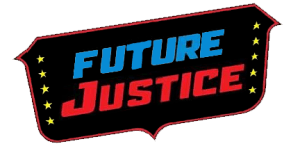
Future Justice was a mini-series idea that would have been set some time in the 26th century, a period of DC’s future history that — as best I could tell — hadn’t been explored.1 It was a pretty simple story, really.
In a nutshell: Earth is on the precipice of a massive alien invasion. Four heroes come together when they learn of a prophecy, that in Earth’s most dire hour, the lost Tomb of Superman will be found…and the “ancient power” will be resurrected to save the world once more. Those heroes are:
Savior: Mysterious super-powered being who appeared from nowhere one day and just started saving lives. He has all of Superman’s powers, but no private life, no secret identity. He’s “on” 24/7.
Nightman: Will Kane, a professor at Yale Megaversity, after watching two of his students get murdered by a street gang, develops a suit of bioarmor, including a thought-sensitive cloak that can take any form. This was a very Silver Agey idea, I thought, harkening back to that time in comics when university professors apparently harbored secret desires to beat the crap out of bad guys. Fine by me.
Green Lantern: A.k.a. , a Green Lantern stand-in from the 20th century2 who, caught up in a time vortex, has ended up in the 26th century.
Skevil Kon: A Thanagarian hawk-police officer exiled to Earth after a diplomatic foul-up back home.
They would be joined their quest by The Troy, Donna Troy, still alive and ageless after all these years, having now evolved over the centuries from Wonder Girl to Troia to the real-life myth called simply The Troy. I imagined her wielding the Persuader’s Atomic Axe, which she would eventually lose (as predicted in the Legion’s time) during World War VII.3
Together, the five of them would find the Tomb…but it’s empty. Superman is not within. The prophecy is a lie.
Or is it? Because what is in the Tomb is a bunch of memorabilia, showing Superman with his pals in the Justice League. The “ancient power” to be resurrected isn’t Superman — it’s the idea of the Justice League. Which, as you’ve figured out by now, I’ve basically re-assembled here, with a Superman, a Batman, a Green Lantern, a Hawkman, and a Wonder Woman.
And so Future Justice is formed and the five of them go off together and kick alien butt.
Nice and simple, eh?
And of course I wanted to spin this off into an ongoing series, which is where the coincidences begin to pile up.
The first thing I would have done in the ongoing series is bring in a Flash.4 I would have used the then-recently-created John Fox, from the 27th century. He would have been “on the run” (sorry, no pun intended) from forces in his own time and have fled to the past. And, yes, of course I planned on a crossover with my Crime Syndicate of America series. Because clearly my talent was so massive that DC would have had me writing two series at once!
So, the first coincidence is using Fox at all. He was an obscure one-off character until years later, when Mark Waid used him in the Flash series…running from forces in his own century and fleeing to the past. Yikes!5
The second coincidence is the idea of having Fox join a super-hero team out of his own time period. Grant Morrison had him join Justice Legion A in the classic DC One Million series.
Speaking of Justice Legion A and DC One Million…a future version of the Justice League? Granted (no pun intended), Morrison’s idea blew mine the hell away, but still — vaguely similar notions.
All weird coincidences, right?
Oh, one more thing. I eventually would have explained how poor Charlie Vicker ended up time-tossed into the future (and why he had to stay there), but I never would have told Savior’s origin. That’s because my plan was that he was, in reality, the pre-Crisis Superman, trapped in a post-Crisis world he couldn’t understand. I would have dropped a few very oblique hints, but otherwise I would have been satisfied with knowing that I’d rescued one of my favorite characters from publishing oblivion.
My buddy Rich Bernatovech was kind enough to draw my characters for me over twenty years ago! We’ve both come a long way since then, but I have to admit — I still get a little shiver when I look at this artwork, bringing my team to life. (I “designed” the costumes for Nightman, Savior, and Green Lantern, such as they are.) Rich kept at his art, evolved his style, and now has his own comics in print. Be sure to check out his most excellent Tumblr!

From top, moving counterclockwise: Skevil Kon, Savior, John Fox/Flash, Donna Troy/The Troy, Will Kane/Nightman, Charlie Vicker/Green Lantern
The Legion was in in the 30th century and Reverse-Flash came from the 25th.He was an actor who played GL on a TV show and then ended up with a ring… Oh, just click on the link.I think it was WWVII. I can never get the future World Wars straight. But at any rate, the Axe had vanished during a previous World War and then re-appeared in the Persuader’s hands in the 30th century.You always need a Flash.This is hardly the last time Waid and I were on the same wavelength, as you’ll see in future installments of Stories I Never Told.
The BLog
- Barry Lyga's profile
- 2185 followers


